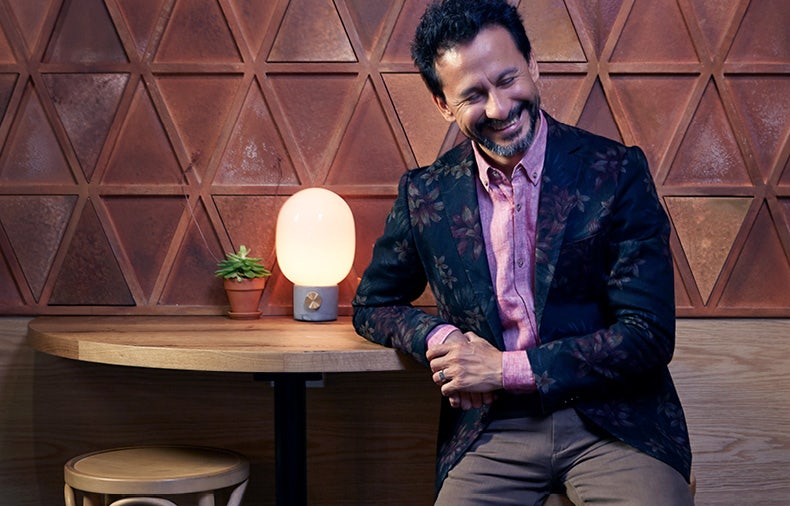A Q&A with Edmundo Farrera, owner of La Fuente Wine & Mezcal, New Zealand's first Mezcal bar.
Mezcal’s an alcoholic beverage distilled from agave, as is tequila, but the two are quite different. How would you explain mezcal to someone who’s not familiar with it?
Mezcal is made in smaller batches, with more dedication. Tequila is made with agave from one species in one region, but mezcal is made from around 300 species, so there’s a lot to discover. The best mezcal is 43-48 ABV, so it’s a powerful drink, but it’s also a very pure drink because there are no pesticides or fertilisers. Its smokiness comes from the agave being cooked for three days in the ground, like a hāngī. Its earthiness comes either from the natural flavour profiles of these species, or from the surroundings. The agave picks up whatever is around it – herbs, chillies, saltiness. Some of the best mezcal is characteristic of wet soil and vegetable roots.
You’re a sommelier, so obviously you know a lot about wine. But where does your passion for mezcal come from?
I grew up in Veracruz in southeast Mexico. Tequila has the big name internationally, but my mum was a biologist, so she liked things to be more pure. She happened to buy handicrafts in Oaxaca and Chiapas, and a family she used to buy fabric from also produced mezcal, so she would buy bottles from them. I grew up with those bottles in my house. One time when I was about seven, my mum had got hold of a very special batch. Being so passionate about it, she gave me a little teaspoon and said ‘you have to try this’. I think my mother realised she flicked my sommelier switch, because I was like how can something be so big, so grand, so harmonious and delicious.
Has mezcal always been popular in Mexico? What’s its place outside of its home country?
It had always been the drink of the poor – it was seen as low class. But now you see all the rich kids in Mexico City drinking it. At the moment there’s a big fashion for mezcal around the world – there are a lot of mezcal bars in London, New York, Paris, Germany, but for me it’s always been mezcal. That’s my passion, and wine is my profession.
You spent a long time in London, where you worked as a sommelier at top restaurants like Hakkasan and Alain Ducasse. How did you end up in NZ?
My wife is a Kiwi, but it was kind of my initiative to move here. I came on holiday about 10 years ago and fell in love with Auckland. We moved here almost eight years ago. I love London but we wanted to buy a house, start a family, and those things were going to be a bit trickier in the UK.
I’d wanted to open my own place since we arrived, but my wife said ‘nobody knows you here, so get your reputation and get to know the market first’. So I worked at Fish at the Hilton, then Andiamo, then the guys from the Savor Group asked me to do some consultancy when Ostro opened, and that turned into working for them. I also did some work for Ebisu and helped open Azabu.
Originally I wanted to open a restaurant, then I spoke to a friend in the wine industry and he helped me change my mentality and focus on the passion. We opened La Fuente in January.
How have New Zealanders taken to mezcal?
My wife Anna has a lot of friends – I inherited like 200 Kiwis in London, and I think that gave me a huge advantage because I never underestimated the Kiwi palate. People get really impressed – recently a woman came in who had never tried mezcal before, and she went out with a $250 bottle just like that.
How does mezcal work with food?
We have a very small kitchen but I consulted with two incredible chefs, so we produce beautiful food that nobody expects – people come here for the wine experience and the mezcal, and then this guacamole comes from this little kitchen and knocks it out of the park.
I’m trying to untap what can be done with food, because as a sommelier my skill is food matching. I discovered by accident at home that certain mezcales are incredible with Indian food, like goat biryani. We’re also exploring pairing mezcal with desserts. If you eat even an average ice cream with particular mezcales, all these layers start coming out of the ice cream. It’s quite fascinating.
You always look very dapper. Is fashion important to you in your job?
When I worked at Hakkasan in London, we were dressed by Ozwald Boateng – that was the uniform, these incredible clothes. When you work on the English circuit you have to be well groomed – everything counts. One of my mentors in Mexico once said something that has always stuck in my head: people have showers, put on the best perfumes and the best clothes to come to your venue, so you better make an effort for them.
At La Fuente we like to keep it almost uniform-less, but we have our beautiful aprons. I love my clothes. I love Italian shoes and French shoes. For work I try to get cool trainers, something to be relaxed in. If I’m going to be at an event looking after 120 people, I need to be comfortable but I still want to look good.
What are you inspired by in the world of art and design?
My favourite artist is Gustav Klimt. All his work has this exquisite roundness. Even the frames he used for his paintings had depth and angles. To me it’s dimensional, which is a word I love. Mezcal can be dimensional too.

